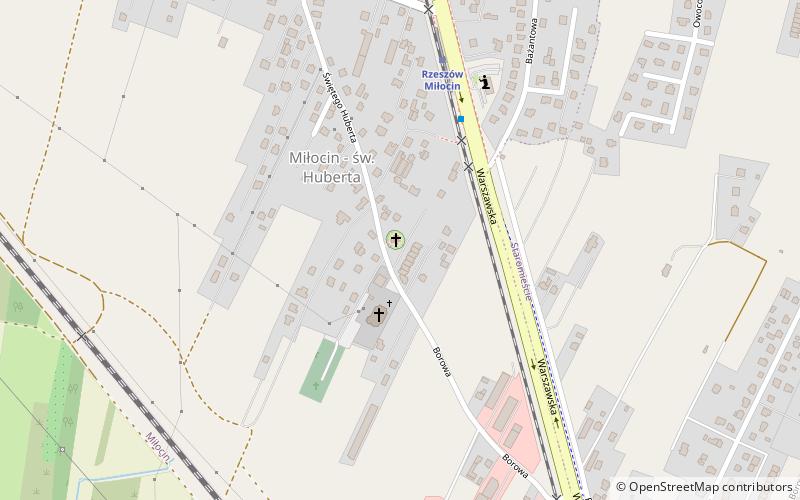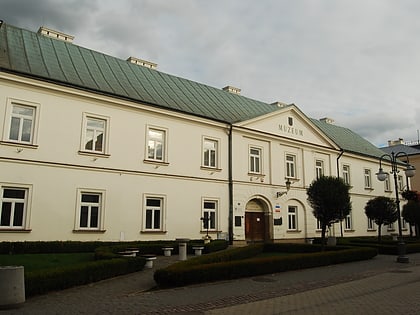Kaplica św. Huberta, Rzeszów


Facts and practical information
Saint Hubert's Chapel in Rzeszów - a baroque hunting chapel. The chapel is located in the church area of the newly established parish of the same name near the housing estates of Baranówka IV and Miłocin, with direct access from Warszawska Street into Borowa Street.
One of the oldest chapels dedicated to St. Hubert in Poland.
The chapel was founded at the end of the first half of the eighteenth century by Prince Jerzy Ignacy Lubomirski. According to local tradition, the chapel was supposed to be a vote of thanks for the prince's salvation after he was wounded while hunting in the nearby Dębina forest. The chapel became part of a larger estate covering a wooded area on the edge of the Sandomierz Forest, which included, in addition to the chapel, a hunting lodge, kennels, and farm buildings. The cult of St. Hubert itself in Poland should be associated with the influence of the Wettin dynasty, from which it was inculcated among the high nobility of the Republic and then transferred and adapted as a cult of the "guardian of hunters".
St. Hubert's Chapel, as well as other realizations commissioned by Jerzy Ignacy Lubomirski, are characterized by the use of various Baroque forms. There are also at least several foundations in the region, including the complex reconstruction of Rzeszów into a residence in the Saxon style, as well as expiatory projects that Lubomirski was to fund as reparation for his murder: the church and monastery of the Capuchins in Rozwadów, or the small church of Mary Magdalene near Rzeszów. Among the main architects commissioned by Lubomirski, in addition to Tylman of Gameren and Karol Henryk Wiedemann, we can also mention a Pole, Jan Bay and two Italians - Peter and John Baptist Belotti.
Construction of the chapel lasted from 1741 to 1745. Determining the authorship and execution of the project is contradictory. With a large dose of probability we can connect the building with the person of Dutch architect Tylman of Gameren, active at that time at the court of the Lubomirski family in Rzeszów, as well as his successor, Saxon military man, Karol Henryk Wiedemann. The first of the mentioned architects would be supported by the shape of the temple, which is a late baroque building imitating the characteristic mass of the church of St. Casimir in the New Town in Warsaw. He also used similar architectural solutions in the church of St. Anthony of Padua in Czerniakow. It is possible that he outlined the concept of the temple, while the execution of works and the finishing of the building fell to Wiedemann.
Since 1969 the chapel became a parish church. As such it was used until 2000, when a new church was opened. In the years 2010-2011 a number of conservation works were carried out in the interior of the temple, as well as on its external facade. All of the interior polychromes underwent conservation, especially the poorly preserved, already mentioned, scene of the "Conversion of St. Hubert". The second stage of conservation work was carried out in 2014.
Rzeszów
Kaplica św. Huberta – popular in the area (distance from the attraction)
Nearby attractions include: Galeria Rzeszów, Millenium Hall, CH New World, Galeria Graffica.
Frequently Asked Questions (FAQ)
How to get to Kaplica św. Huberta by public transport?
Train
- Rzeszów Miłocin (5 min walk)











